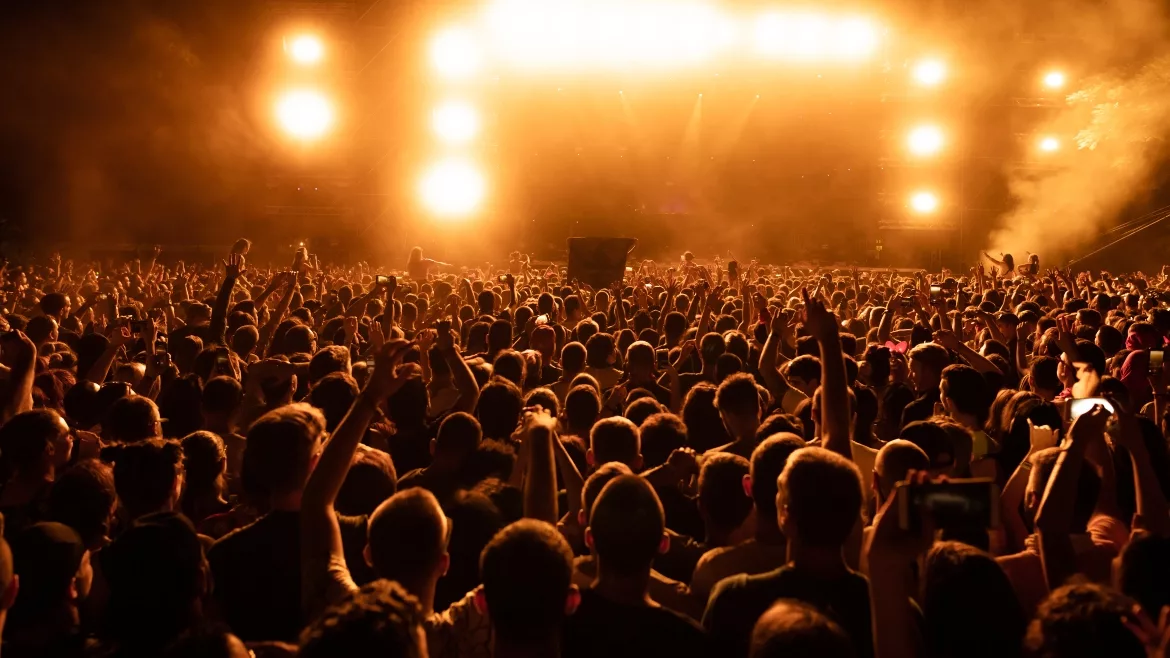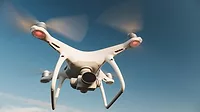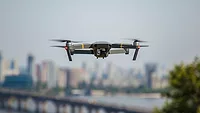To protect and serve: A case for drones and public gatherings

Image by Drazen Zigic via Freepik
In the military, real-time Intelligence, Surveillance and Reconnaissance (ISR) is not only needed but demanded by our leaders. It is a capability that gives us the strategic, operational and tactical advantage against our adversaries. So why wouldn’t we employ the same concepts to provide security and safety for public gatherings like festivals, concerts, and large outdoor gatherings?
The 80’s band Poison had a hit song titled “Every Rose Has Its Thorn,” which could be likened to the assumption that every large public gathering has the potential to turn into a security or safety event. Where people gather and the energy and excitement rise, it’s always possible for accidents or deliberate acts to occur. Look no further than Astro World or the recent July 4th shooting in Illinois to exemplify that there is a clear need for active planning beyond the mere logistics of taking an event from idea to reality.
Simply put, a convergence of security and safety planning, including creative and innovative uses of readily available technology, is a missing piece of the puzzle. There are many ways to get to a standard or functioning framework, but it starts with an openness to change and a willingness to put forth the effort to support event organizers and their “duty of care responsibility.”
An easy way to look at it is through model development, which simply means creating an organized and milestone-driven plan that follows a specific path. This type of model or plan can and should be customized to the event and environment, but it should also be updated along the way.
Like security program development, planning for an event is a “team sport.” It begins with the foundational work of a Threat, Vulnerability and Risk Assessment (TVRA) and ends with internal and external stakeholder rehearsals and exercises. This creates a collaborative and engaged team of planners, organizers, security and safety personnel. It also creates and builds confidence for all involved to become comfortable with the plan for the operational and logistical execution.
Lastly and most importantly, it paves the way for the public to safely participate in and enjoy events without concern. Here is a simple approach with milestones commonly referred to as In-Progress Reviews (IPRs).
- Initial planning meeting with organizers (concept development and goals for the event are established).
- IPR #1: Includes internal and external stakeholders and delivers the initial planning meeting’s goals. It also forms the team.
- IPR #2: Includes a short presentation from each stakeholder and their responsibility to the event. This is where you eliminate overlapping interests and perceived ownership.
- IPR #3: Assignments and responsibilities are solidified, and each stakeholder begins coordination and collaboration and sets conditions for executing the event.
- IPR #4: Site walk and discussion. This is essentially a rehearsal with key players.
- IPR #5: Tabletop exercise that focuses on communication among all stakeholders and representation on the day of the event.
Simple and to the point, this IPR schedule will get you started on a plan that fits your specific event and environment.
Drones, Public Safety and Crowd Management
Now, let’s discuss a security methodology/technology and how it can add value to security and safety.
Over the past several years, society has seen an explosion in drone capability and access to affordable platform employment: commercially, recreationally and militarily. Drones with high-end payloads are easily purchased with the click of a mouse, putting advanced technological capabilities at your fingertips.
This has brought much consternation to security professionals, but it is also viewed as another evolution in a rapidly developing societal context. I’ve personally spent the last several years traveling, educating and promulgating a need for more focused efforts on ways to keep drone technology from causing more harm than good. As I’ve mentioned in the past, drones are a relatively new technology to the market.
Before 2010, these platforms were developing, had limited public access and exposure, and were primarily a tool used by the military. The demand for recreational use only started to build 12 years ago, and now we find ourselves overwhelmed with platform choices and extreme ease of access. It’s been amazing to watch the transformation from hobbyist ideas to application in almost any scenario you can imagine a drone might provide value, which brings me to the heart of the topic and one way to use drones for positive purposes.
A top priority across the United States and other countries is the security and safety of people as they attend public events. Crowd management and monitoring have come to the forefront as a need. Security professionals are quickly finding out that having enough trained staff is a challenge with events taking place in stadiums and arenas on what the industry calls a 365-model, meaning the facility aims to be in use every day of the year.
Many times, venues are simply doing their best to make it through each event, which has triggered the idea that leveraging drone technology in a crowd monitoring and management role might be a good use of the current capabilities. A persistent “eye in the sky” that supports security and safety seems to be a prudent step as we mature our ability to “get ahead” of events that may cause injury or death.
This approach, linked to crowd density modeling, enables decision-makers to generate proactive responses, which is the goal for any security professional. It’s a “left of bang” mentality and the gold standard for those actively planning, coordinating and executing events that host the public.
As you think about this idea, here is a simple package that works and provides an extra layer of situational awareness when combined with on-ground security personnel and staff.
- Pick up where our initial model left off: Execute a tabletop exercise specifically focused on communicating and linking existing technologies to the command-and-control structure.
- Conduct a pre-event inspection by certified crowd managers.
- Think about a drone viewing option. This technology provides an exceptional view of any event from a perspective not available with fixed camera systems.
- Test employment and communications: Establish a command-and-control linkage and visualization of the full-motion video for identified key personnel.
- Include all aspects of security and safety in pre-event planning. This is a direct connection to the event communications plan (primary, alternate, contingency, and emergency) modes and devices.
- Distribute the full-motion video and crowd density visualization as needed.
- Exercise dynamic tasking of the technology with security operations center staff in a controlled environment, pre-event.
- Provide expertise for security operations center liaison during the event
- Conduct an after-action review post-event to capture lessons learned and establish standard operating procedures (SOPs) for the next event.
The tragic end to the Astro World concert was a catalyst to think about and create a new way to approach crowd management and monitoring. This package approach is one way to add a layer of risk mitigation to your very busy public event calendar.
Think about leveraging these ideas as another tool for your use. Let’s keep the conversation going and provide proactive ways to head off problems!
Looking for a reprint of this article?
From high-res PDFs to custom plaques, order your copy today!








